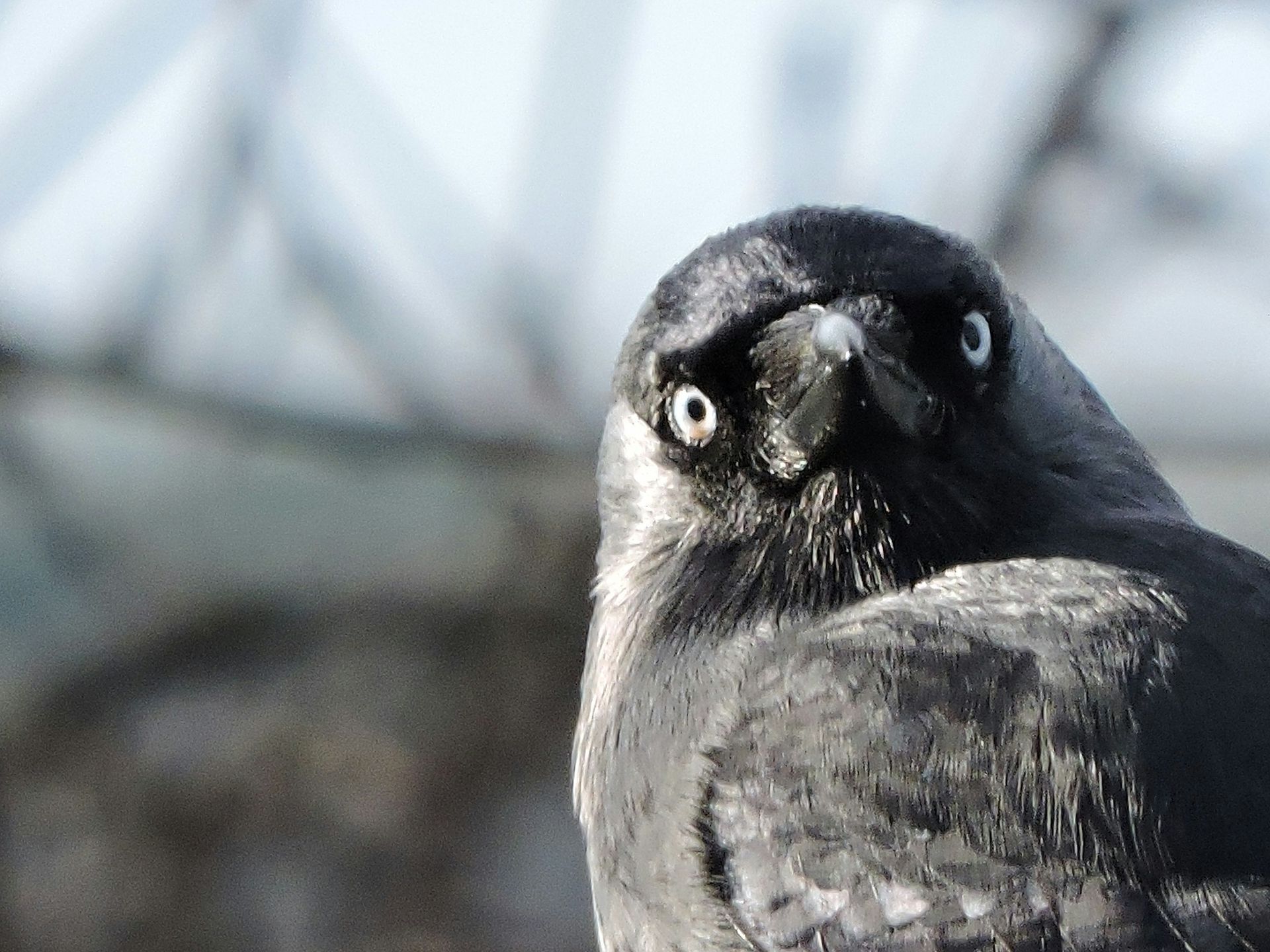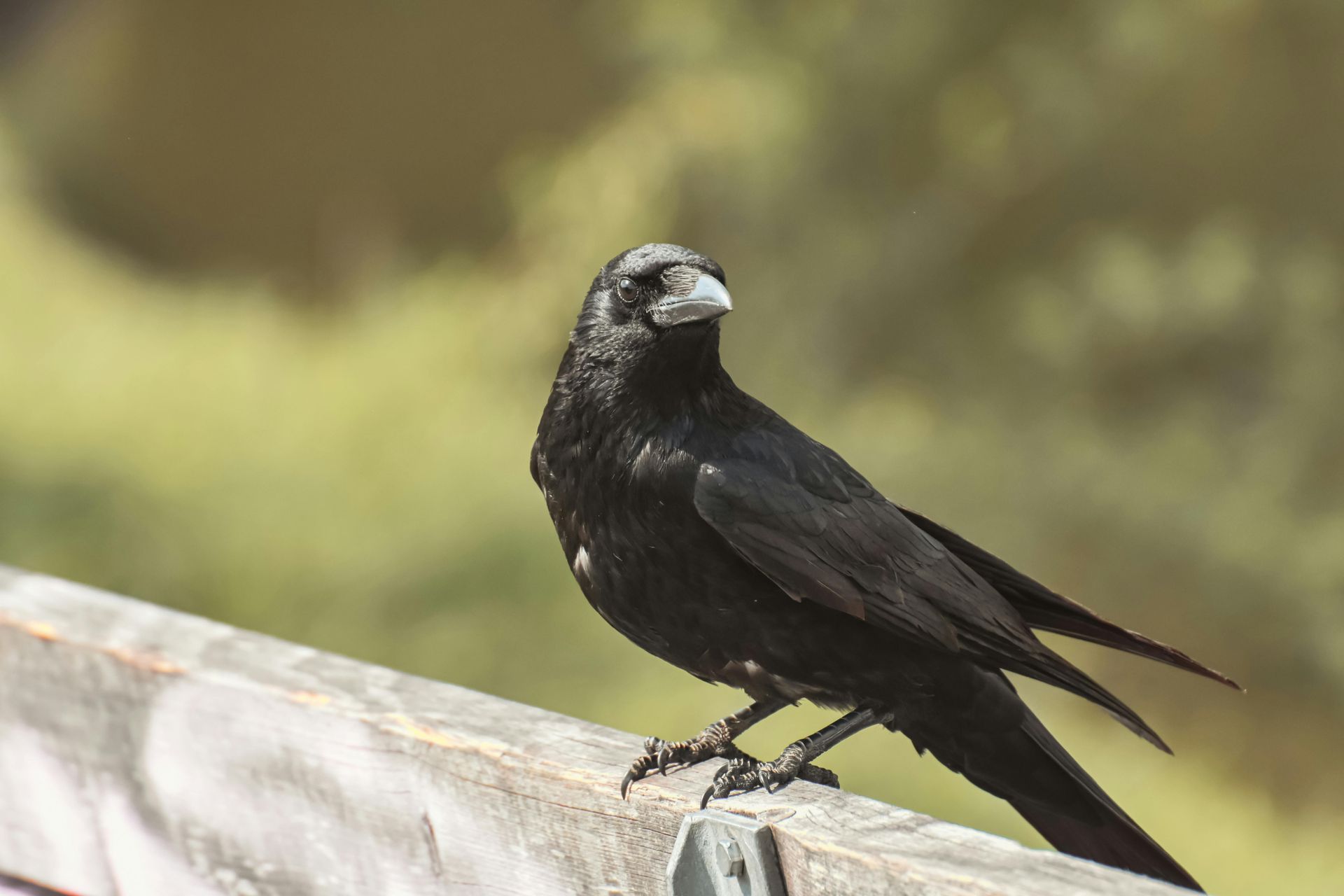Crows, Ravens, Magpies, and Scrub Jays are all in the Corvid family. Crows, like corvids, are highly intelligent and adaptable birds found across nearly every continent except Antarctica. Known for their problem-solving abilities and complex social behaviors, crows play an essential role in ecosystems by scavenging carrion, dispersing seeds, and controlling insect populations. Among the most common species in North America is the American Crow.
Measuring about 17-21 inches in length with a wingspan of approximately 36 inches, crows have all-black plumage, sharp beaks, and distinctive caws. Their keen eyesight and exceptional memory allow them to recognize individual humans and adapt their behavior accordingly.
Crows inhabit diverse environments, from forests and farmlands to urban areas and coastal regions. Omnivorous by nature, they feed on insects, small animals, fruits, seeds, and human food scraps. They are known to use tools and work together to solve complex problems.
During the breeding season, which typically begins in early spring, crows form monogamous pairs that build large, bowl-shaped nests in trees. Both parents participate in raising the young, which fledge after about a month but remain with the family group for extended periods.
Crows are opportunistic and have few natural predators, though hawks, owls, and raccoons may prey on eggs and fledglings. Despite these challenges, their adaptability has enabled them to thrive in both rural and urban settings.

For your safety and the well-being of wildlife, please observe animals from a distance and avoid touching or disturbing them. If you encounter an animal that appears injured or in distress, contact a licensed wildlife rescue organization for guidance before intervening.
Found An Animal? Not sure how to help a wild animal in need? Learn when to step in, who to call, and how to help safely.
Did You Know?
- Crows have been observed engaging in "anting," where they rub ants on their feathers to ward off parasites. Some scientists believe they may also use the formic acid released by ants as a natural insect repellent or to soothe irritated skin.
- Crows are among the most intelligent birds, capable of using tools and solving puzzles.
- They recognize individual human faces and remember those who have treated them well—or poorly.
- Crows are known to hold funerals for their dead, gathering around deceased crows in apparent mourning.
- They have a complex vocal range, with different calls used for communication, warning, and social bonding.
- Crows can imitate human speech and other sounds when raised in captivity.
- They work together in groups to steal food and outwit other animals.
- American Crows have been observed dropping nuts onto roads so cars will crack them open, and then using the crosswalk to safely retrieve the nuts! .
- Crows hatch with bright blue eyes that darken over time.
- Crows mate for life and maintain strong family bonds.
Problems Faced In The Wild
- Habitat Loss: Urban development reduces nesting sites and foraging areas.
- Poisoning: Crows are vulnerable to secondary poisoning from pesticides and rodenticides.
- Vehicle Collisions: Foraging along roadsides increases the risk of being struck by vehicles.
- Climate Change: Altered weather patterns can affect food availability and migration.
- Persecution by Humans: Crows are sometimes targeted due to their perceived nuisance behavior.
- Predation: Eggs and chicks are vulnerable to predators like hawks, owls, and raccoons.
Tips For Cohabitation
- Secure Trash and Compost: Use wildlife-proof containers to prevent scavenging.
- Avoid Feeding Crows: Feeding wildlife can lead to dependency and increase human-wildlife conflicts.
- Limit Pesticide Use: Protect insect populations, which are an essential food source for crows.
- Preserve Large Trees: Mature trees provide critical nesting and roosting sites.
- Reduce Window Strikes: Use decals or screens to make windows more visible to birds.



